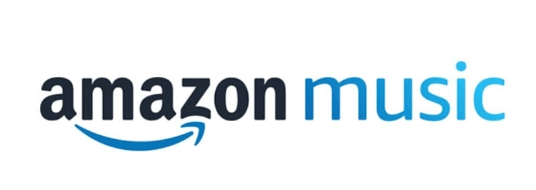In this episode, I spoke to Ian Anderson Gray. Ian is the founder of the Confident Live Marketing Academy and the host of the Confident Live Marketing Podcast. He helps entrepreneurs to level up their impact, authority and profits by using live video confidently.
Ian is also the founder of Seriously Social, a blog focused on live video and social media tools. He’s an international speaker, trainer, teacher and consultant and has a passion for making the technobabble of live video and social media marketing easier to understand.
As well as being a geek, husband and dad to two kids, Ian is also a professional singer and lives near Manchester in the UK.
What you’ll hear
- [1:45] About Ian and his background
- [3:50] Why Ian decided to become an entrepreneur
- [6:10] What gave Ian the confidence to charge what he’s worth
- [11:25] What Ian thinks about Clubhouse
- [14:32] The problem with comparing yourself to others
- [17:53] How to get started with video
- [27:50] Ian’s tips to maximise results from videos
- [32:00] The tools Ian recommends for live video
- [35:20] The most interesting place Ian has visited
In this episode, I spoke to Ian Anderson Gray. Ian is the founder of the Confident Live Marketing Academy and the host of the Confident Live Marketing Podcast. He helps entrepreneurs to level up their impact, authority and profits by using live video confidently.
Ian is also the founder of Seriously Social, a blog focused on live video and social media tools. He’s an international speaker, trainer, teacher and consultant and has a passion for making the technobabble of live video and social media marketing easier to understand.
As well as being a geek, husband and dad to two kids, Ian is also a professional singer and lives near Manchester in the UK.
What you’ll hear
- [1:45] About Ian and his background
- [3:50] Why Ian decided to become an entrepreneur
- [6:10] What gave Ian the confidence to charge what he’s worth
- [11:25] What Ian thinks about Clubhouse
- [14:32] The problem with comparing yourself to others
- [17:53] How to get started with video
- [27:50] Ian’s tips to maximise results from videos
- [32:00] The tools Ian recommends for live video
- [35:20] The most interesting place Ian has visited
About Ian and his Background
Ian trained as a musician and professional singer, but was always interested in technology, and set up a web agency while working in the music industry. In 2011, he started blogging about social media tools, with his article on Hootsuite going viral.
In 2016, when Facebook introduced the live video functionality, Ian started exploring the technology behind it and wrote an article on how to do it. At that time, going live was complicated, and his article blew up – it’s had almost 5m views since it was published.
Off the back of this success, he created a course on how to go live and was invited to speak on the topic at conferences. He then realised that he was going to have to start going live himself and overcome his fears and confidence issues.
The combination of his background in performing, his interest in technology and his teaching skills meant he was able to communicate his passion for live video to his audience, and he’s never looked back.
Why Ian Decided to Become an Entrepreneur
Ian admits that he wasn’t interested in having a business in the beginning, with his interest being more on the technical aspects. However, his father had just retired and had always wanted to set up a business, so they founded the web agency together. They started building websites for musicians because he was familiar with that world, but most of them didn’t have much money.
When he started his blog a couple of years later, Ian didn’t have any intention of monetising it, and he says that the idea of making money from what he did seemed dirty, and it was a mindset block he had to work to overcome.
“It sounds ridiculous now, because I’m excited to grow my business and make an impact on people’s lives. The more money I can make as a business, the more staff I can employ and the more resources I can create that will help more people.”
What Gave Ian the Confidence to Charge What He’s Worth
There are a number of factors, Ian says, which gave him confidence, the first one being the belief of other people in what he was doing. In 2015 he attended Social Media Marketing World (a big conference held in San Diego) and was suffering from imposter syndrome. However, so many other people were excited to meet him and hear about what he did that he got a big boost.
It was still a slow process to rewire his brain to see himself as others saw him and to realise that he had something of value to offer. He participated in masterminds with other business owners and read Daniel Lappin’s You Shall Prosper, both of which had a big impact on him. He realised that making money was a good thing because it meant he could help others.
What Ian Thinks About Clubhouse
Clubhouse is a new audio-only social media platform that allows people to talk in real-time in ‘rooms’. Ian says that he’s been on the app for a couple of months and says it can quickly become a time suck. Many of the users are talking a lot without thinking about who’s listening and what they want.
Instead, Ian says he wants to focus on using Clubhouse to build a community – he’ll be hosting a live show on the platform and then invite people into a private room afterwards for the listeners to discuss what he’s been talking about. To make it work, you need to be strategic.
The Problem with Comparing Yourself to Others
People in business often compare themselves to others, especially those they perceive as being more successful than them. But the problem with that, says Ian, is that you only see what the other person wants you to see. And really, why would you want someone else’s life?
Everyone is at a different season in their lives. Ian has two children who are being home-schooled because of the UK lockdown rules. It wouldn’t make sense for Ian to compare himself with a 20-year-old without kids who’s able to focus fully on their business.
There are different ways to compare yourself to someone else, too. There’s a lot of focus, particularly on Clubhouse, on ‘building a seven-figure empire.’ Money’s important, but it’s not the only way to measure success. What about freedom? Can you take a day off?
This year, Ian wants to see people on social media who are doing well and celebrate them, and learn from their example. He admits that it will take a bit of rewiring, but he’s going to reach out to one person a week who’s made an impact on him, and encourage them.
How to Get Started with Video
Ian has identified three main barriers that people face when they think about doing videos. The first one is fear of getting in front of the camera, the second is the tech and gear, and the third is the content marketing sphere.
Out of those three, the mindset is the hardest to overcome. People will keep putting off the getting in front of the camera bit by distracting themselves with getting the best microphone and software and planning their setup.
The third barrier and working out what to talk about is really important too, and Ian shares what helped him. He launched his show in 2019, and his podcast goes out every week. He says he wasn’t always consistent, but he is now, and he attributes that to creating a launch document for the show.
The launch document includes a promise to yourself and your audience on what the show is going to be about. Identify three themes and use that to come up with ideas for each episode. Ian uses the three barriers to video as his themes. Once you’ve got your launch document, announce on social media that you’re going to be creating the show, and then you’re committed to it.
When it comes to camera confidence, there are lots of things you can do to get over your nerves, but first you need to establish why you’re creating a show, and the launch document will help you to do that.
Ian says there’s no evidence that men and women have different confidence levels or issues, but they probably have different ways of showing it. Men, generally, are better at looking confident, but underneath they’re not really. It’s not good to think about that, and instead to focus on yourself and your own challenges.
Perhaps you have imposter syndrome; you compare yourself to others or there’s something that goes back to your childhood. There can be additional pressure on women to look presentable and wear makeup, which men don’t worry about.
The great thing about live video, Ian adds, is that it’s real, and especially in the current climate, why not just turn up as you are? There are a few women out there doing it, and they will get some criticism, but others will see it as a breath of fresh air.
One of the main reasons to do live video is to encourage people to work with you. If you’re perfect on video but not like that in real life, then you’re doing yourself a disservice. Turn up as you would in real life, and while you may not be everyone’s cup of tea, your ideal customer will love you.
Philip Cutler, the founder of PAPER, says: “This is the new way of marketing – being real and authentic. Stop trying to be perfect; admit your flaws and be real.”
This is what attracts your ideal audience, and it works brilliantly in video, whether that’s live or pre-recorded. Have fun and don’t take yourself seriously.
One of the big mindset issues is that people can often be self-obsessed. Concentrating on your equipment, how you look or if people will like your voice is selfish, and you’re not thinking about the people you’re trying to serve. None of those things matters to your audience – they’re interested in you and what you say, so put them first.
Live video can be an antidote to perfectionism, which is a mindset issue that a lot of people struggle with, Ian included. If you try to get things perfect, you’ll never release them to your audience, so don’t do it.
Ian’s Tips to Maximise Results from Videos
Consistency is a big part of this, although it doesn’t always mean you’ll get traffic. However, if people can see you’re creating content, even if they don’t watch your first few live videos, they may just pop in occasionally. It takes time to grow your audience.
Think about broadcasting on different platforms, depending on where your audience is. Video is like any other content – you have to let people know that you’re creating it before it’s released.
There are a few ways of doing this, including sending a message to your email list, Facebook Messenger bots, share on social media, use a countdown timer to the launch date, or use Addvent which allows you to create calendars your audience can subscribe to for notifications when your latest show is live. Think about offering giveaways too.
There are two separate audiences for live audiences, and it’s easy to get hung up on the people who watch in real-time. However, you also need to think about the people ‘in the future, who watch the replay, which will be most of your viewers. Having them in mind will help you structure your video, and if you then repurpose it into a podcast, you need to think about those listeners separately.
The Tools Ian Recommends for Live Video
Ian says that you don’t have to be particularly tech-savvy to get started, and recommends using your smartphone in the beginning. There are some disadvantages, as you can’t schedule or screenshare from your phone, and it’s harder to bring in guests.
Use your smartphone to build up your confidence, and then switch to a computer once you’re more comfortable. There are several tools you can use for live video, but Ian recommends Restream Studio for beginners. It allows you to go live directly from your browser, share your screen, broadcast simultaneously across platforms and see comments as they come in. You can have up to nine guests as well.
To take it up a level, you can use a desktop app, and there are a number of options for this, including OBS Studio, Wirecast and VMix. The tool that Ian prefers is Ecamm Live, which is only available for Mac. It’s easy to use and very powerful. Ian integrates it with Restream and utilises both platforms’ features together.
The Most Interesting Place Ian has Visited
Ian says it’s hard to choose between Nepal, where he went paragliding, and Rarotonga, one of the Cook Islands. Ian visited there in 1996 as part of the National Youth Choir of Great Britain. Rarotonga has a rainforest, mountains and a barrier reef with mini-islands to walk to.
About this Episode
 In this episode, I spoke to Ian Anderson Gray. Ian is the founder of the Confident Live Marketing Academy and the host of the Confident Live Marketing Podcast. He helps entrepreneurs to level up their impact, authority and profits by using live video confidently.
In this episode, I spoke to Ian Anderson Gray. Ian is the founder of the Confident Live Marketing Academy and the host of the Confident Live Marketing Podcast. He helps entrepreneurs to level up their impact, authority and profits by using live video confidently.
Ian has identified three main barriers that people face when they think about doing videos and in this episode, he reveals what they are and how entrepreneurs can overcome them to expand their reach.















